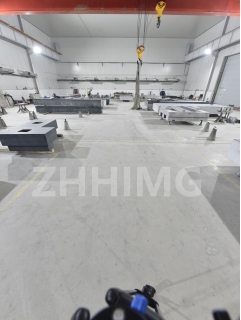Optical waveguide positioning devices rely on precise and accurate alignments to function properly. One of the most critical components of these devices is the use of granite components. Granite components are ideal for precision applications due to their high stability, stiffness, and resistance to thermal and mechanical stress. In this article, we will discuss how to assemble, test, and calibrate granite components for optical waveguide positioning device products.
Assembling Granite Components:
The first step in assembling granite components is to clean and prepare them. Granite components like optical benches, breadboards, and pillars should be meticulously cleaned before use to remove any contaminants. A simple wipe down with a clean, lint-free cloth and alcohol will suffice. Next, the granite components can be assembled by mating the pillars with the breadboards and optical benches.
The use of precision mounting hardware such as screws, dowels, and clamps is recommended. The components should be tightened evenly to avoid warpage or deformation. It is also important to ensure that the pillars are square and level, as this will impact the accuracy and precision of the final assembly.
Testing Granite Components:
Once the granite components are assembled, they should be tested for stability, flatness, and levelness. Stability is critical to ensure that the components do not move during use. Flatness and levelness are essential to achieve accurate and repeatable measurements.
To test for stability, a precision level can be placed on the granite component. If the level indicates any movement, the component should be tightened and retested until it remains stable.
To test for flatness and levelness, a surface plate and a dial gauge can be used. The granite component should be placed on the surface plate, and the dial gauge should be used to measure the height at various points across the component. Any variations can be adjusted by shimming or grinding the component until it is flat and level.
Calibrating Granite Components:
Once the granite components are assembled and tested for stability, flatness, and levelness, they can be calibrated. The calibration process involves aligning the component with reference points to achieve the desired accuracy and precision.
To calibrate an optical bench, for example, a laser interferometer can be used to align the bench with a reference point. The interferometer measures the displacement of the bench as the reference point is moved, and the bench is adjusted until the measurements match the desired values.
Conclusion:
In summary, assembling, testing, and calibrating granite components for optical waveguide positioning device products is critical to achieving accurate and repeatable measurements. Each step in the process is essential to ensuring the final product is of high quality and meets the desired specifications. By following these steps, companies can produce reliable and precise optical waveguide positioning devices that are essential for various applications, including telecommunications, medical devices, and scientific research.
Post time: Nov-30-2023

